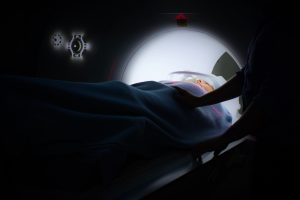Salivary Glands
About
 This type of cancer can occur in any of the salivary glands located below the tongue, in the cheek area in front of the ears, at the upper jaw along the teeth, or below the jawbone. The three major pairs of glands are called the parotid, the sublingual and the submandibular glands.
This type of cancer can occur in any of the salivary glands located below the tongue, in the cheek area in front of the ears, at the upper jaw along the teeth, or below the jawbone. The three major pairs of glands are called the parotid, the sublingual and the submandibular glands.
People typically first notice a problem because of a lump on the face, neck or mouth, numbness of the face, or fluid draining from the ear. There are also a number of other symptoms associated with this type of cancer. Remember that the symptoms you experience might also be caused by other medical conditions so it is important for you to consult a physician to confirm a diagnosis.
It’s normal for you to wonder how you got cancer of the salivary glands. Although we still don’t have all the answers, we do know that there are risk factors associated with people developing this cancer, especially previous exposure to radiation treatment for head and neck cancer, age, and certain environmental exposures. Remember that there is no single cause for developing this type of cancer.
Screening and Diagnosis
 You may need to undergo a number of tests for the screening and diagnosis, which will help your team to assess the stage, or severity of the cancer. Your head and neck specialist will first perform a physical examination to look for signs and symptoms of cancer, and then may order one or more of the most commonly used tests such endoscopy, x-rays, and MRI.
You may need to undergo a number of tests for the screening and diagnosis, which will help your team to assess the stage, or severity of the cancer. Your head and neck specialist will first perform a physical examination to look for signs and symptoms of cancer, and then may order one or more of the most commonly used tests such endoscopy, x-rays, and MRI.
Learn about some of the other tests commonly used for head and neck cancers
Treatment
Cancers of the hypopharynx are biologically aggressive and have more ability to spread than other types of head and neck cancer. Because most hypopharyngeal tumors grow in a silent fashion without presenting noticeable symptoms, they are often quite large by the time the patient is first seen.
Surgery
Cancers of the salivary glands are generally not aggressive. As a result, a high percentage of patients are cured and go on to live for decades even if the cancer returns. Surgery is the frontline treatment for small salivary gland cancers that have not spread to the lymph nodes in the neck. Radiation is given to patients as an additional treatment when their tumors are more aggressive.
In most cases, surgery effectively removes small tumors without causing significant problems with chewing, swallowing and speaking. In cases where surgery alters facial appearance, patients may need to undergo reconstructive surgery, and there are many surgical reconstruction techniques available for that procedure
Early-Stage Salivary Gland Cancer
The surgical approaches to treating salivary gland cancer depend on the whether the cancer is at an early or late stage of development. Small, early stage tumors are treated with surgery, occasionally followed by radiation.
The surgery involves making an incision, similar to the one made for a face-lift, in front of the ear. One very important part of the operation is finding the facial nerve so that every measure can be taken by surgeons to protect it during the removal of the tumor. For the majority of patients with small tumors, the facial nerve can be preserved without any losses to normal facial movement.
Late-Stage Salivary Gland Cancer
Larger tumors that occur during later stages have to be removed by radical surgery followed by radiation and/or chemotherapy. In some patients, the facial nerve is also involved with the tumor and will need to be removed along with branches of the facial nerve.
The issue that arises with having to cut the facial nerve is that the muscles it stimulates will no longer be active. In such cases, reconstructive surgery to insert a nerve graft will be required in order for patients to regain the use of some facial muscles. The graft inserted to replace the piece of cut facial nerve will grow back out to the muscle at a rate of about one inch per month. That means that if the facial nerve was cut just below the earlobe, it would take around eight months to regenerate in most patients.
Patients with late stage cancer may also require neck dissection surgery where the lymph nodes close to the cancer are removed and then assessed by a pathologist. In cases where multiple lymph nodes test positive or where the cancer is growing along nearby nerves, patients are treated with radiation and/or chemotherapy after surgery.
Surgical Complications
For most patients, surgery to remove salivary gland cancer is without complications. For some, complications do arise and may lead to:
- A lack of symmetry between the cheeks as a result of surgery to remove the tumor.
- Frye’s syndrome where patients sweat at the surface of the cheek while they are eating. Frye’s syndrome occurs because the nerves to the salivary glands that are cut while removing the tumor can mistakenly regrow to the facial sweat glands resulting in a release of sweat when food is being eaten.
Preparing for Your Surgery
Prior to surgery, you will have an appointment at the pre-admission clinic located at the Toronto General Hospital. You must bring all information about recent medical tests, as well as the names and phone numbers of physicians you have seen in the past.
A pre-admission nurse will perform the patient admission, assessment and blood work, usually 2-3 weeks before the surgery. A clinical nurse coordinator will supervise your preadmission appointment, explain the information about your surgery, introduce you to the staff and take you on a tour of the surgical inpatient unit if you request it. The pre-admission clinic is responsible for providing all tests, assessments and educational information to patients and family members prior to the scheduled surgery.
Starting at midnight on the night before your surgery, you must not eat, drink, chew or suck on candies as it is of the utmost importance that your stomach be empty when you have your surgery.
On the morning of your surgery, you must arrive at the hospital 2 hours before the scheduled surgery time. The preadmission nurse and nursing staff will prepare you for surgery, and insert an intravenous (IV) needle that will allow fluids, antibiotics and pain medications to be injected into your blood during the surgery.
During Your Surgery
When the tumor is removed, the head and neck surgeon will also remove a 1.5 cm section of tissue surrounding the tumor. This tissue is immediately frozen and cut into sections so that a pathologist can identify whether the tissue surrounding the tumor edges is normal or cancerous.
The head and neck surgeon will await the pathologist’s diagnosis before completing the surgery. The pathologist will give a diagnosis of ‘negative margins’ when the thin slice of tissue surrounding the tumor contains only normal cells.
Alternatively, the pathologist will give a diagnosis of ‘positive margins’ if cancer cells are observed in the thin slice of tissue surrounding the tumor. In the case of a ‘positive margin’ diagnosis, the head and neck surgeon will remove additional tissue at the tumor site before completing the surgery. The additional tissue is frozen, cut into sections and sent to a pathologist to check for cancer cells. Patients will be informed of the results during their first visit with their oncology surgeon.
For a significant number of patients, their cancer will spread to the lymph nodes in the neck region. For some, the spread to the lymph nodes will not be seen or felt. For others, the lymph nodes will be visibly swollen and lumpy to the touch. The fact that even early stage cancers spread to the lymph nodes in the neck 20-30% of the time has led to the common practice of surgically removing the neck lymph nodes closest to the cancer. This intervention will help to prevent the spread of cancer to other areas of the body.
Depending on the treatments received, you may require a second, more extensive surgery to rebuild the cheek area. This additional surgery is called reconstructive surgery and it may happen at the same time as the tumor is removed or or at a later date after you have recovered from the first surgery.
Follow-Up Care
 Follow-up care for cancer of the salivary glands is critical and you will need to see your physician on a regular basis. You may also need ongoing therapy for speaking and swallowing problems.
Follow-up care for cancer of the salivary glands is critical and you will need to see your physician on a regular basis. You may also need ongoing therapy for speaking and swallowing problems.
Many members of the multidisciplinary treatment team will work with you through this challenging process, and can offer continuing care and guidance about the services and resources that may be of assistance during your recovery or palliative care.
